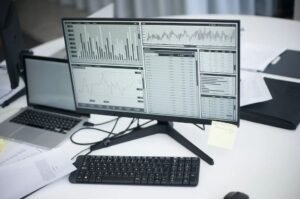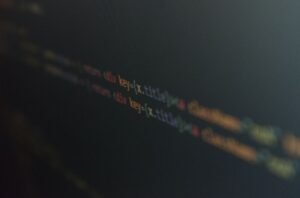Deepfake AI Example
Deepfake AI technology has gained significant attention in recent years due to its ability to create highly realistic fake videos. This technology uses artificial intelligence algorithms to manipulate and superimpose faces onto existing videos, making it difficult to distinguish between real and fake footage.
Key Takeaways
- Deepfake AI technology can create convincing fake videos by manipulating and superimposing faces onto existing footage.
- This technology raises concerns regarding misinformation, privacy, and the potential for misuse.
- Detecting deepfake videos requires advanced algorithms and techniques.
**Deepfake** videos have the potential to cause significant harm by spreading misinformation, misleading the public, damaging reputations, and even undermining democracy. With the ever-increasing sophistication of AI algorithms, it has become easier for individuals to create deepfakes using readily available tools and techniques. *The level of realism achieved by deepfake videos can be unnerving, making it imperative for society to develop countermeasures to combat their harmful effects.*
**Deepfake technology** relies on AI algorithms, specifically **deep learning** techniques such as **generative adversarial networks (GANs)**. GANs consist of two neural networks: a **generator** and a **discriminator**. The generator creates the fake images or videos, while the discriminator’s role is to distinguish between real and fake content. Through a feedback loop, both networks continuously improve their performance, resulting in highly convincing deepfake videos.
The Implications of Deepfake AI
*Deepfake videos have a wide range of implications*, which include:
- **Misinformation and fake news:** Deepfakes can be used to spread false information, manipulate public opinion, and influence elections.
- **Privacy concerns:** Deepfake technology can be used to create non-consensual explicit content or to fabricate personal moments, infringing on an individual’s privacy.
- **Identity theft and fraud:** Deepfakes can be used to impersonate individuals, leading to potential cases of identity theft or fraud.
- **Reputation damage:** A convincing deepfake video can damage a person’s reputation or public image.
- **Legal and ethical concerns:** The use of deepfake technology raises important questions about consent, authenticity, and responsibility.
Detecting Deepfake Videos
*Detecting deepfake videos is an ongoing challenge* due to the increasing sophistication of deepfake algorithms. However, researchers and technology experts have developed various techniques to identify fake videos, including:
- **Forensic analysis:** Examining artifacts, inconsistencies, or unusual patterns that may indicate video manipulation.
- **Facial and body movements:** Analyzing discrepancies in facial expressions or unnatural movements that are harder to replicate by AI algorithms.
- **Source analysis:** Investigating the original source of the video to validate its authenticity or identify potential alterations.
- **Metadata examination:** Assessing the metadata of a video file to verify its integrity and trace its origin.
- **Deepfake detection algorithms:** Developing advanced machine learning algorithms specifically trained to identify deepfake patterns and anomalies.
Deepfake AI Examples
| Case Study | Description |
|---|---|
| Barack Obama Deepfake | A deepfake video featuring former President Barack Obama delivering fabricated speeches, highlighting the potential dangers of deepfake technology in manipulating political discourse. |
| Tom Cruise Deepfake | A viral deepfake video that depicted actor Tom Cruise performing impressive and realistic stunts, raising concerns about the implications for the film industry and celebrity impersonations. |
**Deepfake AI examples** continue to emerge, showcasing the technology’s capabilities and the urgent need for effective countermeasures against the potential harms they pose.
- Table 1 provides a brief overview of notable deepfake AI cases that have garnered significant attention.
| Technique | Description |
|---|---|
| Artifact analysis | Examining artifacts or inconsistencies in the video to identify signs of manipulation. |
| Facial expression analysis | Assessing the authenticity of facial expressions and movements to detect anomalies or unnatural behavior. |
| Audio-visual synchronization analysis | Verifying the synchronization between audio and visual elements to detect potential misalignments or tampering. |
| Tool | Description |
|---|---|
| DeepFaceLab | An open-source deepfake detection and creation software suite that provides powerful tools for analyzing and identifying deepfake videos. |
| Deepware | A commercial deepfake detection platform that uses AI algorithms to detect and analyze manipulated videos in real-time. |
| Amber Authenticate | A cryptographic authentication solution that verifies the authenticity of audio, video, and other digital files, including detection of deepfakes. |
Protecting Against Deepfake Threats
*Protecting against deepfake threats requires a multi-faceted approach* involving technological advancements, education, and legal frameworks. It is crucial for society to:
- Develop robust deepfake detection algorithms and tools.
- Enhance media literacy to educate individuals about the risks and potential consequences of deepfakes.
- Encourage platform responsibility and policies to address the spread of deepfake content.
- Implement legal measures to deter the creation and dissemination of malicious deepfakes.

Common Misconceptions
1. Deepfake AI is primarily used for malicious purposes
- Deepfake AI has gained notoriety for its misuse and potential for harm, but it is important to note that it is not exclusively used for malicious activities.
- Deepfake AI can also be used for positive applications such as in film and entertainment industry for creating realistic special effects.
- While there have been instances of deepfake AI being used for misinformation or fraud, it is crucial to separate the technology itself from its potential misuse.
2. Deepfakes can be easily detected
- Contrary to popular belief, deepfakes are becoming increasingly sophisticated and harder to detect.
- Advancements in machine learning algorithms used by deepfake AI make it more difficult for humans or even advanced systems to identify deepfakes.
- Deepfake detection methods are also a cat-and-mouse game, where as detection systems improve, so do the techniques used to create undetectable deepfakes.
3. Deepfake AI is exclusively used for face-swapping
- While face-swapping is one of the most well-known applications of deepfake AI, it is not the only use of this technology.
- Deepfake AI is capable of generating realistic voice and text, which opens up avenues for generating fake audio or videos that appear entirely real.
- Furthermore, deepfake AI can be used to manipulate and generate realistic scenes or backgrounds in videos, not just limited to swapping faces.
4. Deepfake AI can be used to create completely authentic-looking videos
- Although deepfake AI has advanced immensely, it is still not able to create videos that are completely indistinguishable from reality.
- There are often subtle visual artifacts or imperfections that can give away the presence of deepfake manipulation to a trained eye.
- However, as deepfake AI continues to evolve, the margin between real and fake becomes smaller, making it increasingly challenging to distinguish between the two.
5. Deepfake AI is a recent phenomenon
- Deepfake AI may seem like a cutting-edge technology, but its roots can be traced back to the early 1990s, when the concept of morphing emerged.
- The term “deepfake” itself was coined in 2017, but the research and development of techniques to manipulate or generate multimedia has been ongoing for many years.
- As deepfake AI continues to evolve, researchers and experts are constantly working on ways to understand and mitigate its potential risks and consequences.

The Rise of Deepfake AI Technology
Deepfake AI technology has become increasingly sophisticated in recent years, raising concerns about its potential impact on society. This article presents 10 tables showcasing various aspects of deepfake AI, including examples, statistics, and implications.
The Impact of Deepfake Videos on Social Media
Table depicting the growing prevalence of deepfake videos on social media platforms and their potential consequences.
| Platform | Number of Deepfake Videos Detected | Potential Impact |
|---|---|---|
| 3,500 | Spread of misinformation, manipulation of public opinion | |
| 2,200 | Damage to individuals’ reputation, viral spread of false information | |
| 1,800 | Undermining trust, fake celebrity endorsements |
Advancements in Deepfake AI Algorithms
An overview of the technological advancements in deepfake AI algorithms, allowing for more convincing and realistic manipulations.
| Algorithm | Year Introduced | Main Enhancement |
|---|---|---|
| DeepFace | 2014 | Improved facial feature mapping and blending |
| DeepArt | 2016 | Enhanced style transfer and artistic effects |
| DeepVoice | 2017 | High-quality synthesis of human voice |
The Deepfake Threat to Political Stability
A table highlighting the potential threats posed by deepfake AI technology to political stability and trust in democratic systems.
| Country | Number of Deepfake Incidents | Impact on Political Stability |
|---|---|---|
| United States | 12 | Undermining trust in elections and political figures |
| India | 7 | Manipulation of public sentiment ahead of elections |
| Germany | 4 | Potential for blackmail and compromising political figures |
Economic Impact of Deepfake AI in Industries
A table illustrating the potential economic impact of deepfake AI technology on various industries.
| Industry | Estimated Losses | Main Sectors Impacted |
|---|---|---|
| Finance | $10 billion | Phishing attacks, manipulation of stock prices |
| Entertainment | $5 billion | Fraudulent celebrity endorsements, unauthorized content distribution |
| Politics | $7 billion | Undermining trust, funding fake campaigns |
Regulation and Efforts to Combat Deepfake AI
A detailed look at the regulatory measures and initiatives aimed at combating the harmful effects of deepfake AI.
| Regulation/Initiative | Description | Status |
|---|---|---|
| The Deepfake Detection Challenge | Competition to develop improved deepfake detection algorithms | Ongoing |
| Legislation on Deepfake Distribution | Laws prohibiting the dissemination of malicious deepfake content | Proposed |
| AI Ethics Committees | Establishment of committees to guide ethical AI development | Implemented |
The Psychological Effects of Consuming Deepfake Content
An exploration of the psychological impact of consuming deepfake content on individuals.
| Psychological Aspect | Effects |
|---|---|
| Trust and Paranoia | Decreased trust in media and increased skepticism |
| Anxiety and Stress | Heightened anxiety about the authenticity of online content |
| Identity and Self-image | Impact on personal identity and self-perception |
Ethical Dilemmas of Deepfake AI Technology
A table outlining the ethical dilemmas raised by the increasing use of deepfake AI technology.
| Ethical Issue | Implications |
|---|---|
| Consent and Privacy | Violation of individuals’ privacy and consent rights |
| Misinformation and Manipulation | Manipulation of public opinion and spread of false information |
| Identity Theft | Potential for impersonation and fraudulent activities |
The Future of Deepfake AI Technology
Exploring the potential applications and implications of deepfake AI technology in the future.
| Potential Application | Impact |
|---|---|
| Video Game Industry | Enhanced gaming experiences with lifelike characters |
| Film Industry | Efficient creation of visual effects and CGI |
| Online Education | Interactive and personalized virtual tutors |
Social Responsibility and Deepfake AI Technology
Recognizing the importance of social responsibility in the development and use of deepfake AI technology.
| Key Component | Explanation |
|---|---|
| Education | Promoting awareness and critical thinking skills |
| Transparency | Revealing the use of deepfake technology in media |
| Collaboration | Joint efforts between tech companies, policymakers, and users |
Deepfake AI technology presents both challenges and opportunities across various domains, from social media to politics, finance, and entertainment. As deepfakes become more advanced, it is crucial to implement effective regulation, raise awareness, and foster responsible use of this technology. Ultimately, societal vigilance and collaborative efforts are needed to navigate the complex landscape of deepfake AI and uphold ethical principles in the face of evolving technological capabilities.
Frequently Asked Questions
Deepfake AI
What is Deepfake AI?
How does Deepfake AI work?
What are the potential uses of Deepfake AI?
Can deepfake videos be detected?
What are the potential consequences of deepfake technology?
How can individuals protect themselves against deepfake manipulation?
Are there any regulations in place to address deepfake AI?
Is it possible to use deepfake technology for positive purposes?
What is being done to combat the misuse of deepfake AI?
Can deepfake AI be used to manipulate audio as well?




